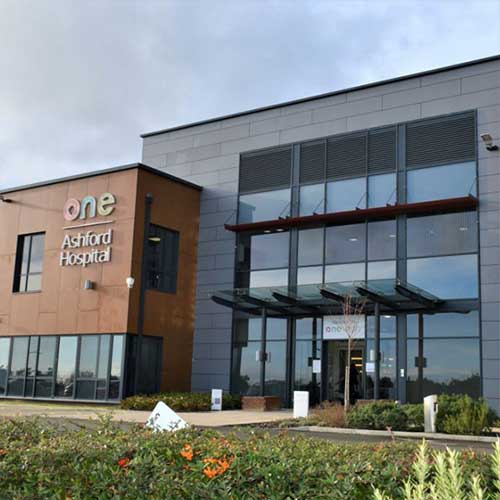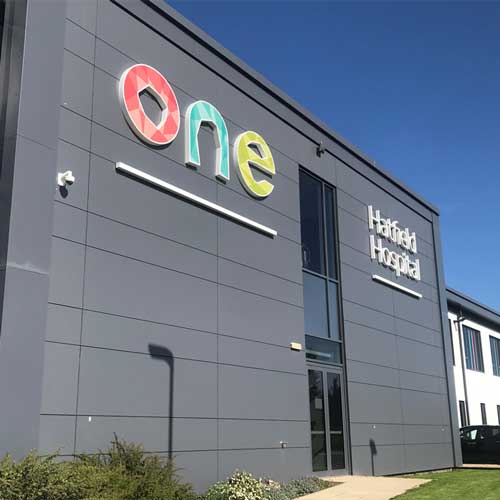Septoplasty
A septoplasty is a surgical procedure carried out to correct a deviated septum. The procedure straightens the septum, allowing for better airflow.
The septum is the thin wall of bone and cartilage that divides the right and left nostrils. The majority of people have a septum that is slightly off centre, with most having one nasal passage much smaller than the other. If the septum is noticeably misaligned or largely different in size, surgery may be recommended.
Causes of a Deviated Septum
Some people are born with deviated septums, but it can also be caused through injury to the nose. If your condition does not affect your breathing or lead to frequent sinus infections (sinusitis), you can probably avoid surgery.
Symptoms of a Deviated Septum
Symptoms of a deviated septum can range from mild to severe, but typically include:
- Trouble breathing
- Facial pain
- Nosebleeds
- Inflammation
Preparing for Septoplasty
Before surgery, you will have a pre-assessment appointment with a clinician to take a detailed medical history and check your vital signs, including blood pressure, height and weight. You may be asked to stop taking certain medication about 2 weeks before surgery; these include aspirin, ibuprofen and other blood thinners. This will reduce your risk of excessive bleeding during and after the procedure. If you have any allergies to medication such as penicillin, or a history of bleeding, ensure you inform your clinician.
Undergoing Surgery
Your surgery is likely to be carried out by an Ear, Nose and Throat (ENT) surgeon, although some plastic surgeons also carry out the procedure, particularly if being performed for aesthetic purposes.
The surgeon may take pictures of your nose before surgery to compare before and after the procedure to see how your nose has altered.
There will not be any cuts made to your face so there will be no visible scarring. An incision is made on 1 side of your nose to access the septum, after which the mucous membrane is lifted; this is the protective cover of the septum. The deviated septum is moved into the right position, and any loose pieces of cartilage or bone are removed. If the surgeon has to cut the bone in order to straighten your nose, silicone splints will be put in place to support the septum. You may also require nasal packing, which is a gauze-like material that is placed in the nasal cavity to absorb blood or other fluids. This will be removed on your follow-up appointment.
The whole procedure takes approximately 30 – 90 minutes, depending on the severity and complexity of the condition.
Post-Operative Recovery
Most Septoplasty procedures are performed on an outpatient basis, meaning you will be able to go home on the same day once the anaesthetic has worn off and there are no complications.
Your nose will be swollen and painful immediately after the operation and you are likely to be prescribed pain relief if needed.
You should avoid physical activities for several weeks after surgery to minimise swelling and promote healing. This includes high intensity sports such as contact sports, running and weight lifting as they can increase your blood pressure and lead to heavy bleeding. In order to accelerate your recovery, try doing the following:
- Do not blow your nose for at least 3 days following surgery
- Elevate your head at night with an extra pillow to reduce swelling
- Wearing clothing that buttons up at the front to avoid pulling it over your head
- Avoid lifting heavy objects
Risks and Complications
Septoplasty is a relatively safe procedure with good outcomes, although some people may require a second a surgery if they are unsatisfied with the initial results. Complications include:
- Discolouration of the nose
- Altered nose shape that does not meet your expectations
- Bleeding
- Scarring
- Perforation of the septum (a hole forms in your septum)
- Decreased sense of smell
- Infection
Outlook after Septoplasty
Healing time is relatively quick, and your breathing is likely to improve soon after the procedure; however, cartilage and other nasal tissues can take up to a year to fully settle into their new shape. Most people do not experience any ongoing symptoms, although a second surgery may be required if the cartilage and nasal tissues shift over time, as this can result in blocked airflow.
Need Help?
At One Healthcare we can book you in to see a specialist Ear, Nose and Throat surgeon, usually within 48 hours, for an initial consultation. Septoplasty treatment is available at One Ashford Hospital in Kent and One Hatfield Hospital in Hertfordshire.
You can use your private medical insurance or pay for your Septoplasty treatment. We offer competitive, fixed price packages as well as the ability to spread the cost of your treatment over a number of months. If you are using your health insurance, please contact your insurer first for approval and let them know you’d like to be treated at One Ashford Hospital
Why One Ashford Hospital
- Access to leading Consultants within 48 hours*
- Spread the cost with finance**
- Competitive fixed-price packages
- Modern purpose-built hospital
- Private, spacious, ensuite rooms
- Specialist Physiotherapy and nursing teams
- Little waiting time for surgery
- Calm, dignified experience
*Dependent on Consultant availability
**Terms and conditions apply
Contact us and find out more
If you are based in and around Kent, Maidstone, Dover, Canterbury or Folkestone and would like to visit the One Ashford Hospital please click hereEar, Nose and Throat Pricing Guide at One Ashford Hospital
This is a list of guide prices for some of common Ear, Nose and Throat treatments and procedures.
| Treatment | Guide Price |
|---|---|
| Functional endoscopic sinus surgery (FESS) | £5,650 |
| Insertion of Grommet (Adult) | £2,625 |
| Tonsillectomy (Adult) | £3,295 |
If treatment for your condition is not listed above, contact the hospital on 01233 423000 where a member of our Reservations team can provide you with a quote.




 One Ashford
One Ashford One Hatfield
One Hatfield